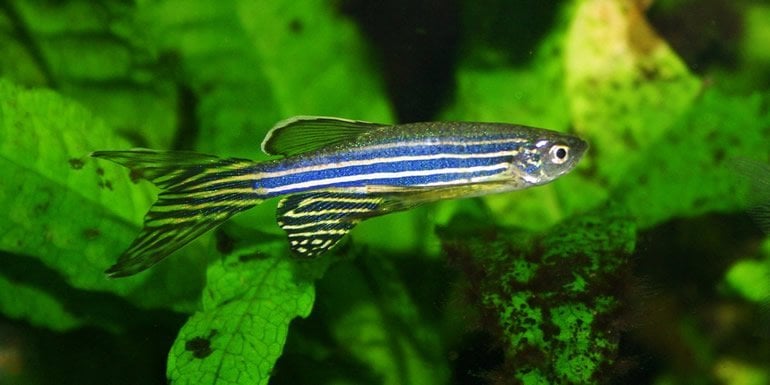Summary: The way zebrafish respond to repeated exposure and withdrawal from nicotine mirrors more complex human responses during withdrawal.
Source: University of Alberta
Researchers have identified nicotine-induced withdrawal for the first time in the zebrafish model—a discovery that could be used to test ways of treating withdrawal from addiction in humans.
Trevor Hamilton, an adjunct professor in the Faculty of Science and member of the Neuroscience and Mental Health Institute at the University of Alberta, examined the role of nicotine exposure on zebrafish. He looked at two main factors: their boldness and their locomotion.
With acute nicotine exposure, the zebrafish demonstrated increased boldness, as measured by the fish’s inclination to approach a small figurine placed in the testing arena. Acute exposure also increased the fish’s locomotion, or willingness to move around the tank.
Repeated nicotine exposure followed by a period of withdrawal, however, caused a decrease in boldness and movement, which from previous research is thought to be associated with increased anxiety-like behaviour in the zebrafish.
Hamilton linked the traits to emotionality during addiction in humans: “We know that people who quit smoking have an increase in anxiety, and that increased feeling of stress drives them to go have another cigarette. That’s part of the addictive mechanism. So at a very basic level we’re looking at the same thing in fish.”
Hamilton explained that zebrafish make an ideal model for pharmacological research because their genome has been sequenced and they have a rapid reproduction rate, which allows researchers to easily examine patterns of addiction to substances like nicotine across generations and with powerful genetic tools.

The next steps in the project involve narrowing the window of time to determine when the shift from an increase to decrease in boldness occurs, and pinpointing the start of the withdrawal behaviour.
“If we can find that point and then also at the same time look before and after at changes in brain chemistry, it’ll give us an idea of which neurotransmitters are involved, and where neuroadaptation is taking place,” said Hamilton.
“Then, once we learn a little bit more about the brain chemistry, we can start looking at which drugs could potentially alleviate and somewhat reverse these adaptations.”
About this addiction research article
Source:
University of Alberta
Contacts:
Adrianna MacPherson – University of Alberta
Image Source:
The image is credited to University of Alberta.
Original Research: Open access
“Opposing Effects of Acute and Repeated Nicotine Exposure on Boldness in Zebrafish” by Rachel Dean, Erika Duperreault, Dustin Newton, Jeffrey Krook, Erica Ingraham, Joshua Gallup, Brian C. Franczak & Trevor J. Hamilton. Scientific Reports.
Abstract
Opposing Effects of Acute and Repeated Nicotine Exposure on Boldness in Zebrafish
Nicotine is an addictive compound that activates neuronal nicotinic acetylcholine receptors (nAChRs) and causes behavioural effects that vary with dose, schedule of administration, and animal model. In zebrafish (Danio rerio), acute doses of nicotine have been consistently found to have anxiolytic properties, whereas, chronic exposure elicits anxiogenic effects. To date, however, studies on repeated nicotine administration and the effects of nicotine withdrawal have not been well explored using this model. In this study, we administered nicotine with three different dosing regimens: 1. Single exposures of a “high” dose (25, 50, 100, or 400 mg/L) for 3 minutes. 2. Single exposures to a “low” dose (2.5, 5, or 20 mg/L) for one hour. 3. Repeated one-hour exposure to a “low” dose (2.5, 5, or 20 mg/L) for 21 days. The novel object approach test was used to examine boldness based on the tendency of the fish to explore a novel object. Acutely, nicotine significantly increased the time spent approaching the object with both three-minute and onehour durations of exposure, indicating increased boldness. Conversely, after repeated nicotine exposure for 21 days, fish spent less time approaching the object suggesting a decrease in boldness. Distance moved was unaffected one hour after repeated nicotine exposure, yet decreased after a two-day withdrawal period. Our work suggests that nicotine can have opposing effects on boldness that vary based on dosage and schedule of exposure.






